
FROM THE DACM – “BEYOND THE BASICS”
From the Director, Acquisition Career Management, Ronald “Rob” Richardson, Jr.
Original article in AL&T News
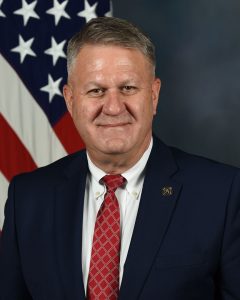
Ronald R. Richardson Jr., Director, U.S. Army Acquisition Support Center and Director, Acquisition Career Management
The Army Acquisition Workforce is now working under a new and improved framework. On February 15, the Army implemented “Back-to-Basics”—a talent management initiative meant to streamline acquisition workforce functional areas and prioritize training resources. The previous 14 Army acquisition career fields are now six functional areas with seven certification tracks, which are more closely aligned with our acquisition modernization priorities.
The Back-to-Basics initiative also required that we reevaluate which positions make up the Army Acquisition Workforce, focusing on those professionals who develop, acquire and sustain operational capability. That effort resulted in decoding out some positions of the Army Acquisition Workforce. Our total workforce numbers are now just over 32,000 compared to the more than 40,000 under the previous framework. We’re a more focused workforce, aligning better with the needs of the acquisition enterprise.
HOW IT STARTED
The Defense Acquisition Workforce Improvement Act (DAWIA) became law in 1990. Around that time I was a young Army captain, and I remember the race to get certified in your acquisition career field. This was a new requirement. There was also a general sense that the more certifications you had the more competitive you would be as a candidate for promotion.
I recall the first level of certification being a big lift. I took ACQ 101 at Hanscom Air Force Base with a diverse group of acquisition professionals from whom I learned a great deal and, in all candor, probably more than from the course itself. The group at my table consisted of an Air Force officer from the B-52 follow-on operational test and evaluation program, an Army civilian from the Patriot Missile program, a Navy officer working Phalanx sustainment, a food scientist from Natick Soldier Systems Center and me. As I recall, the course itself was three weeks long, and included a wealth of information, such as an introduction to all major acquisition functions. We went through the Program Manager’s Handbook in its entirety; learned a lot about planning, programming, budgeting and execution; and discussed case studies on predominantly Acquisition Category (ACAT) I programs. For many of us, it would be another 20 years before we would have the opportunity to work on a major defense acquisition program. Others would never receive that chance.
Over about the next year and a half, I took all of the Defense Acquisition University (DAU) coursework I needed for Level II certification in both program management and systems engineering, as well as Level I qualifying courses in most of the other (six at the time, if I recall correctly) acquisition career fields. As the number of career fields expanded and the workforce grew, I noticed that there was tremendous overlap between classes, both within the career field as well as between career fields. Such was the repetition that as much of half the training was often a repeat of what I already knew or had learned in previous courses. It seemed a refresher of training content became more and more necessary as we changed jobs—our minds a bit fuzzy on all the content we learned in that ACQ 101 class so many years ago.
HOW IT’S GOING
Back-to-Basics was the first major reform of the defense acquisition management framework since my time as a captain back in the 1990s, and it was a necessary one.
Our Army continues to face limited resources, especially training resources. But more importantly, this transition serves as a reminder of what’s important with regard to individual and workforce professional development.
Under the previous system, I think people lost sight of what was truly important, and sometimes confused certification with qualification. Acquisition courses and certifications alone didn’t make me a good program manager—that was the result of my overall education, the totality of the institutional learning, the continuous learning offered through DAU and other sources, my on-the-job experiences, and the lessons learned and professional connections I made that really prepared me to advance and take on more responsibility.
As an Army Acquisition Workforce professional, this is the journey you are now empowered to take for your career. You and your direct supervisor are now in the driver’s seat. Discussions about career path need to be on-going and documented in the individual development plan. Supervisors serve as mentors, and provide training recommendations that are relevant, timely and meaningful for the employee, the team and the organization. It’s a great position to be in to be able to chart your own path. Our supervisors can grow their employees and encourage them to prepare and move into better, more challenging positions.
CHECK IT OFF
I understand moving into Back-to-Basics is a big shift. To set yourself up for success, I recommend you take the following actions:
- Check your Acquisition Career Record Brief in CAPPMIS to ensure all information is correct.
- Update your resume in USA Jobs to reflect the new certification structure.
- Review and understand certification requirements, which can be found on our Back-to-Basics website at https://asc.army.mil/web/dacm-office/back-to-basics.
- Review your updated career path.
- Continuously engage with your supervisor to discuss educational and developmental opportunities.
- Update your individual development plan (IDP) regularly.
Your first-line supervisor should be your first point of contact for all issues related to Back-to-Basics, but my team is here for you too. Our acquisition career managers are standing by to fix any issues or clarify guidance.
Professionalizing the Army Acquisition Workforce is my top priority. We’re doing all we can to prepare our professionals to take on some of the most challenging acquisition assignments. Quality training and depth of experience—learning your craft and doing the job is what will enable our success.
REFORM TAKES CENTER STAGE FOR ARMY’S NEW ACQUISITION BOSS
An interview with Douglas Bush, assistant secretary of the Army for acquisition, logistics and technology
Original article by Jared Serbu, deputy editor and DOD reporter, Federal News Network; sourced from the Federal News Network’s 2022 ITES-SW2 Contract Guide.

Douglas R. Bush, Assistant Secretary of the Army for Acquisition, Logistics and Technology (ASA(ALT))/Army Acquisition Executive
The Army’s newly confirmed top acquisition official says improving how the service buys and builds software is a top priority. That includes both procedural changes to the Army’s traditional acquisition processes and funding software development. But those changes are going to have to happen as part of a “conversation” with Congress, said Douglas Bush, assistant secretary of the Army for acquisition, logistics and technology.
Over the past few years in National Defense Authorization acts, Congress has been pushing the Defense Department to streamline its software development and purchasing processes—including by adopting the recommendations the Defense Innovation Board made in a 2019 software acquisition and practices study.
DOD, for its part, created a new software acquisition pathway within its new Agile Acquisition Framework. Bush said the Army currently has six programs using the new pathway. The framework “seeks to get away from the waterfall approach to a more iterative, modern approach to software, trying to take advantage of the way industry is doing software,” he told reporters during a roundtable. “It will also be an ongoing discussion with Congress in terms of how we’re using that authority and whether they’re comfortable with a different approach where the funding might have to be more flexible.”
As one example, he noted that the private sector doesn’t distinguish between research and development and procurement of software. “But we do. So does that make sense anymore? I’m not so sure,” Bush said. DOD leaders will need to make sure lawmakers are also comfortable with changing up how the department budgets for software. Congress has shown at least some openness to changing budgeting processes. At the urging of the department—and the innovation board—appropriators created a pilot program that lets software development programs use a single “color of money,” rather than having to segment funds along the budget lines of traditional weapons systems: research and development, procurement, operations and maintenance.
To read the full article, click here.
“DEMOGRAPHICS OF ARMY’S ACQUISITION WORKFORCE SLOWLY CHANGING”
An interview with Ronald “Rob” Richardson, Jr., director, Acquisition Career Management

Ronald R. Richardson Jr., Director, U.S. Army Acquisition Support Center and Director, Acquisition Career Management
Original article by Scott Maucione, defense reporter, Federal News Network; sourced from the Federal News Network’s 2022 ITES-SW2 Contract Guide.
The Army’s acquisition organization is starting to see a change in the demographics of its civilian workforce, moving slightly and slowly away from older, retirement-age employees. The service, like other parts of the Defense Department, feared in the past that it would not be able to replenish its civilian workforce with younger blood. The bell curve is slowly moving in the right direction, said Ronald “Rob” Richardson Jr., director of the U.S. Army Acquisition Support Center (USAASC), which oversees the service’s acquisition corps and workforce.
“For years, there was this concept of the aging workforce: We’re going to have all these folks that suddenly are going to drop out of the picture. And we had nobody behind them to backfill,” Richardson told Federal News Network. “That’s really not the case now.”
CONTINUED PUSH TO FIND TALENT IN ACQUISITION
Richardson attributes the change to outreach the Army has done to recruit college-age students into the acquisition field. USAASC hires hundreds of college interns and is increasing its involvement with historically black colleges and universities. “Our mission is really our secret sauce,” Richardson said. “We have a really great mission. We have really cool toys.”
Outside of bringing in younger talent, the Army also is finding that retirement-age employees are willing to stick around longer than expected. “We don’t know exactly why, but I think a lot of it probably has to do with COVID-19 and remote work,” Richardson said. “I tasked the team to go back out and see if we can tease out why that is. Is it just, ‘I’m happy working at home, so I’m going to defer my retirement for a couple of years?’ Is it that ‘I love the mission so much, I’m just not ready to go yet?’ Or, ‘I have college-age kids that I’m waiting to get out?’ It may be all those things.”
To read the full article, click here.
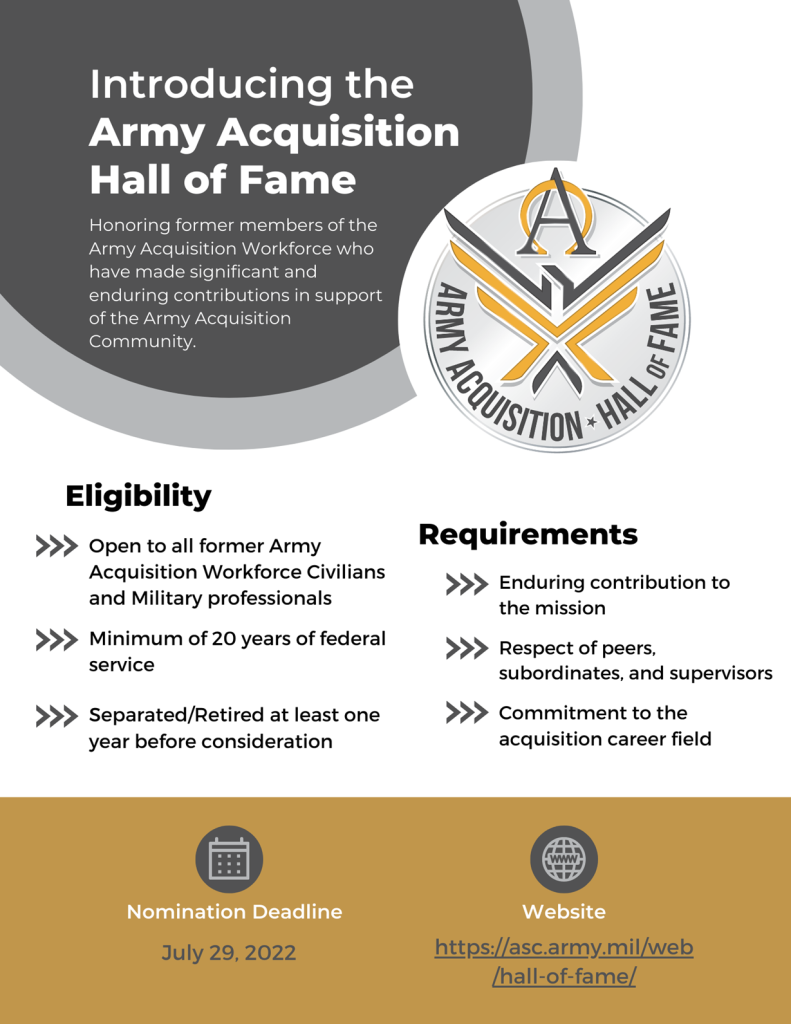
CAREER NAVIGATOR – “FEEL THE BURN(OUT)”
Original article by Jacqueline M. Hames, as featured in AL&T magazine.
In this era of side hustles and the glorification of workaholics, it’s hard to establish professional boundaries, especially if multiple jobs are necessary to make ends meet. Work—whether actual tasks or simply work-related thoughts and anxieties—have crept into our collective downtime. Paired with two years of pandemic restrictions and any number of personal stressors, the workforce is primed for it—burnout.
THE SIGNS
For people teleworking, there is no morning commute in which we can mentally gear up, and no commute home during which we can decompress, and no physical distance between us and the office-provided equipment. Those working at locations in person, like healthcare workers and other essential personnel, or those doing physical jobs like welding, are frequently making up for being understaffed and lacking resources by putting in extra time.
Workplace burnout or job burnout, as defined by an article from the Mayo Clinic, “is a special type of work-related stress—a state of physical or emotional exhaustion that also involves a sense of reduced accomplishment and loss of personal identity.” It can be the result of several things: Lack of control, unclear job expectations, a dysfunctional workplace, extremes of activity, lack of social support and lack of a work-life balance, the article continued—all factors that the collective workforce experienced during the pandemic.
Some signs of burnout, as listed on WebMD, include:
- Exhaustion and trouble sleeping.
- Cynicism.
- Feelings of uselessness.
- Depression.
- Extreme job dissatisfaction.
- Irritability or anger.
- Trouble concentrating.
- Frequent headaches.
- Pain in your gut.
- Use of alcohol, drugs or other unhealthy habits as coping mechanisms.

TIME TO STEP AWAY: Many tend to spend too much time at their desks, whether it’s working remotely or at the office. Build movement or exercise into your routine. Just move with a regular exercise routine or maybe a 15-minute dance break after that long meeting. (Getty Images)
Corporations and the government are now calling for a full return to the office. That prospect is daunting for some—even if people enjoy being in the office.
In April 2022, the “Army Workplace Guidance for Final Reentry of Civilian Personnel” memorandum was released, reflecting guidance from DOD. The Army’s guidance is that all civilian employees will be given 30 days advance notice in writing before being asked to return to the office, “absent an urgent or compelling mission need.” It also states that “telework flexibilities should be broadly extended to telework-eligible employees, when practicable and subject to mission requirements.”
But, after a few years, before- and after-work schedules have been drastically adjusted to accommodate certain flexibilities, including “sleeping in.” Personnel have also adjusted wardrobes (ah, sweatpants), exercise habits and even physical locations, occasionally moving to a different area to be nearer family or other support systems. Launching back into a pre-pandemic work routine for some is going to be difficult to say the least, perhaps bordering on overwhelming.
Continue reading this article on Army AL&T News.
MIDPOINT DESTINATION: SIG SAUER
Original article by Rachel Berry

WITHIN RANGE: During the field range visit, the fellows participate in a shooting safety overview and then competed in guided firing exercises using Sig Sauer’s products.
From March 26 to 28, the Army Acquisition Training with Industry (TWI) Fellows from around the country gathered for their program midpoint trip. TWI is a work-experience program that provides extensive exposure to best in breed managerial techniques and industrial procedures within corporate America to competitively selected officers. This assignment is offered to highly motivated and skilled officers in the grade of O4-O5. Applicant backgrounds are matched up against desired and required skills of the specific companies.
The annual midpoint trip rotates each year to a different company—this year, Sig Sauer hosted it at their headquarters in Portsmouth, New Hampshire. Lt. Col. Ken Elgort, Army Acquisition TWI program manager, said the midpoint “is an integral part of the TWI experience where fellows can cross pollenate ideas and best practices learned from their industry partners. These ideas can then help these future leaders in their next assignment, which for the most part is a CSL [centralized selection list] level billet.”
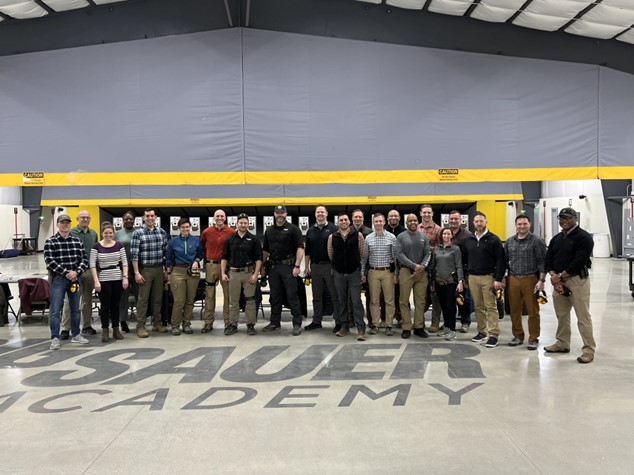
The week began with an escorted tour of the Sig Sauer headquarters, including the manufacturing plant and field range. The fellows had the opportunity to spend time with the CEO of Sig Sauer, Ron Cohen, who provided insight into the company vision and strategy, and an outside perspective on doing business with the military. The fellows followed the entire manufacturing process throughout the plant and learned how the company adapted through pandemic challenges, including making all parts in house and attracting competitive talent. During the afternoon, the fellows went out to the Sig Sauer Academy range, where they participated in a shooting safety overview and then competed in guided firing exercises to highlight features that Sig Sauer wants to bring to the military to improve performance, like red dot pistol scopes.
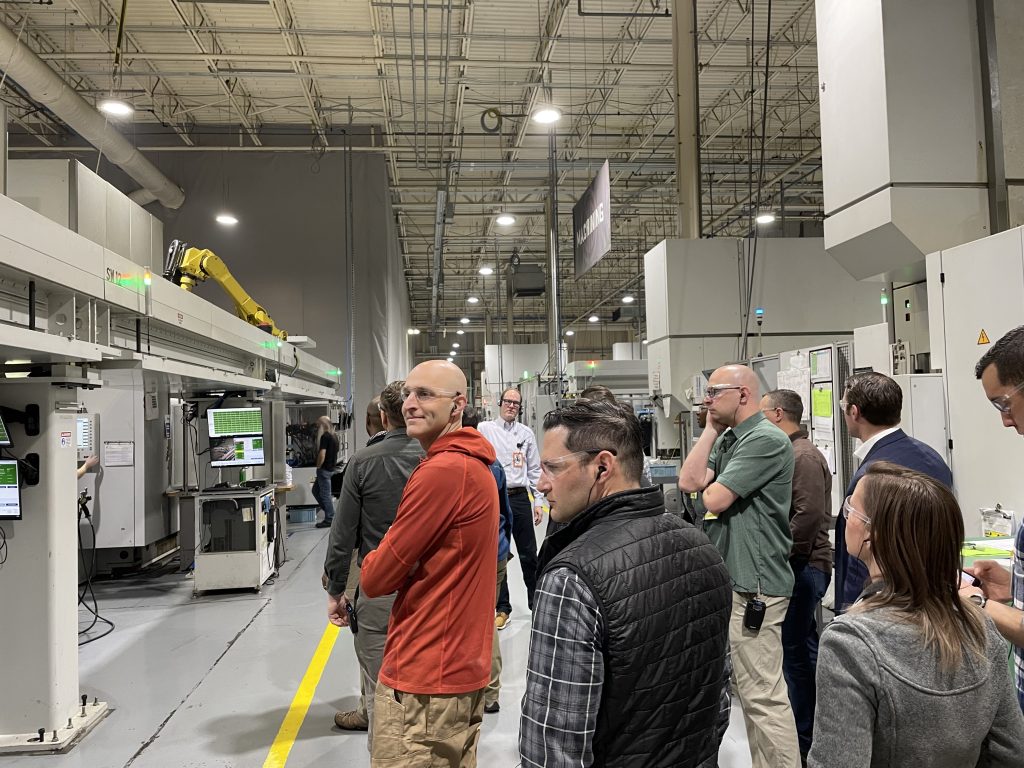
TAKING THE TOUR
The fellows tour the Sig Sauer headquarters, following the entire manufacturing process throughout the plant.
For the remainder of the trip, the group gathered to learn and contribute feedback about ongoing acquisition changes. Each fellow gave an overview presentation of their TWI experience to the group. Since most of the officers spent their entire career in the Army, there were great conversations on industry culture, leadership, history and business practices. Some officers rotated throughout different departments in an organization, while others’ experience was singularly within a team at their placement.
Continue reading this article on Army AL&T News.
HUMAN CAPITAL STRATEGIC PLAN IN ACTION
The Inspiring and Developing Excellence in Acquisition Leaders (IDEAL) program, which is offered through the Army Director for Acquisition Career Management (DACM) Office, is a leader development program for GS-12 and-13 (or broadband equivalent) Army Acquisition Workforce (AAW) new and emerging supervisors. The program includes classroom instruction, engagement with senior leaders, site visits and individual and group projects. In between sessions, participants return to their workplaces where they use their new skills.
A recent analysis found an over 90 percent satisfaction rate among participants for elements of the IDEAL program. Maj. Camille Morgan, DACM Office, led the analysis with the support of the IDEAL network including the program manager, instructors, participants and participant supervisors. The goal of this in-depth program analysis is to ensure competency effectiveness and that the continued development of AAW professionals is achieved. This analysis is also in support of the AAW Human Capital Strategic Plan (HCSP).
The HCSP leverages the four strategic outcomes identified in the Army People Strategy, tailored to the mission needs of the AAW. The HCSP goals are specific, actionable areas of work that organize, coordinate, integrate and enable efforts across the AAW and the DACM Office. One of the DACM Office’s priorities is to gather feedback and observations on how effective the IDEAL program is to the AAW. With the feedback received during this analysis, the IDEAL program can be adjusted and maintained to meet the current and future demands for program participants.
THE RESULTS ARE IN
For the survey, former participants answered questions using the following Likert scale: extremely satisfied, very satisfied, satisfied, somewhat satisfied, not very satisfied and not at all satisfied. From the 22 past participants’ responses, field trips had the highest satisfaction rate with a 100 percent rating dispersed from very satisfied to extremely satisfied. Classroom instruction and facilitation, guest speakers, crucial conversations and influencer program attributes scored a 95.4 percent satisfaction rate dispersed from satisfied to extremely satisfied. Finally, in-class practical exercises scored a 90.9 percent satisfaction rate dispersed from satisfied to extremely satisfied.
Continue reading this article on Army AL&T News.
ACQUISITION EDUCATION, TRAINING AND CAREER DEVELOPMENT OPPORTUNITIES
ACQUISITION TUITION ASSISTANCE PROGRAM ACCEPTING APPLICATIONS—GET A FREE DEGREE OR GO FOR A FEW COURSES
The application window for the Acquisition Tuition Assistance Program (ATAP) is OPEN NOW through July 16. ATAP is designed to fund individual business college courses or business college courses required for a master’s or bachelor’s degree in a business or acquisition discipline for eligible Army Acquisition Workforce (AAW) members. ATAP is a fiscal year (Oct.-Sept.) program that provides tuition, laboratory and technology fees, within limits, to AAW civilians, military occupational specialty (MOS) 51 contracting (51C) noncommissioned officers (NCOs), and flexible length and renewable term technical appointment employees in the Department
of Defense laboratories designated as science and technology reinvention laboratories (STRLs).

OPEN FOR APPLICATIONS! INSPIRING AND DEVELOPING EXCELLENCE IN ACQUISITION LEADERS FISCAL YEAR 2023
The Inspiring and Developing Excellence in Acquisition Leaders (IDEAL) program for fiscal year 2023 is open for applications through August 3. IDEAL targets new and emerging supervisors who are seeking to refine their leadership skills or develop them in preparation for a supervisory or leadership position. Applicants must be civilian AAW members, GS-12 or -13 (or broadband equivalent) and must meet DAWIA certification requirements. To learn all about this popular program, go to https://asc.army.mil/web/career-development/programs/inspiring-and-developing-excellence-in-acquisition-leaders-ideal.

CLOSING SOON—ACQUISITION LEADERSHIP CHALLENGE PROGRAM
Accepting applications until July 31!
The Leadership Foundry offers a hard hitting leadership development seminar series called the Acquisition Leadership Challenge Program (ALCP) at four different levels of an organization. All seminars are a teambuilding and practical guide to assist overall Leadership and Diversity development in organizations.
The foundation of the ALCP is self-awareness as the key to both leadership and diversity development to create an innovative culture by helping to understand each individual’s personal preferences and behaviors and how each not only interact with their co-workers, but how they are viewed by others. This approach includes addressing people’s unconscious biases to help them discover new approaches to doing things and emphasizing the strength and power in accepting individual differences to produce a stronger whole.
The ALCP training will ensure that people can communicate with their supervisors through a common language and help develop leaders who value individual styles and behaviors, creating a leadership corps more capable of critical thinking and problem solving, teamwork and collaboration, and creativity and innovation.

For details and application instructions, go to the ALCP page at https://asc.army.mil/web/career-development/programs/acquisition-leadership-challenge-program.
CONGRATULATIONS TO THE DAU-SSCF CLASS OF 2022 GRADUATES
Defense Acquisition University (DAU) Senior Service College Fellowship (SSCF) program’s class of 2022 graduated on May 24. Nineteen graduates were honored in a virtual ceremony where Larry Muzzelo, deputy to the commanding general, U.S. Army Communications-Electronics Command and DAU-SSCF alumnus gave the keynote speech. President James Woolsey, DAU, Director of Acquisition Career Management (DACM) Ronald Richardson, and Christopher (Michael) Upton, DAU-SSCF Class of 2022 Fellow, also spoke at the event.
The graduates come from one virtual seminar and two in-person seminars in Huntsville, Alabama and Picatinny Arsenal, New Jersey. This is the sixteenth class to graduate from the DAU-SSCF program. The DAU-SSCF program is a 10-month educational senior leadership development opportunity sponsored by the DACM. Open to civilian acquisition professionals in grades GS-14 and -15 (or equivalent broadband), DAU-SSCF provides leadership and acquisition training to prepare senior level civilians for leadership roles in program management and contracting, as well as other key acquisition leadership positions. For more information go to https://asc.army.mil/web/career-development/programs/defense-acquisition-university-senior-service-college/.
DAU-SSCF CLASS OF 2022
Huntsville Seminar
- Yolanda Alexander,S. Army Combat Capabilities Development Command (DEVCOM), Aviation and Missile Center (AVMC)
- Regina Bublitz,Program Executive Office (PEO) for Intelligence Electronic Warfare and Sensors (IEW&S)
- William English,PEO Missiles and Space
- Lisa Hirschler,S. Army Aviation and Missile Command (AMCOM)
- Nakia Redmon,AMCOM
- John Walden,PEO IEW&S
- Paige Walker,DEVCOM AVMC
Picatinny Seminar
- Frank Altamura,Joint Program Executive Office Armaments and Ammunition (JPEO A&A)
- Gary Barber,JPEO A&A
- Stephen Bielamowicz,JPEO A&A
- Benjamin Harris,JPEO A&A
- Sharon Laverty,PEO Enterprise Information Systems
Virtual Seminar
- Wayne Beutler,DEVCOM Ground Vehicle Systems Center
- Matthew Horning,Next Generation Combat Vehicles Cross-Functional Team
- Willie Lindsay,S. Army Medical Center of Excellence
- Robert Monto,S. Army Rapid Capabilities and Critical Technologies Office
- Vanessa Pittman,S. Army Tank-Automotive and Armaments Command
- Kelly Tisch,PEO Command, Control and Communications-Tactical
- Christopher (Michael) Upton,PEO Combat Support and Combat Service Support
See the original article on Army AL&T News.
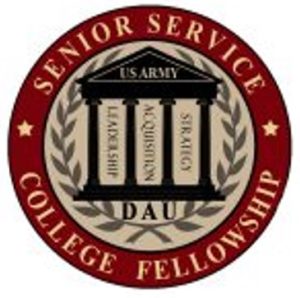
SENIOR SERVICE COLLEGE FELLOWS PARTICIPATE IN STRATEGIC SITE VISITS
Original article by Rachel Berry, DACM Office
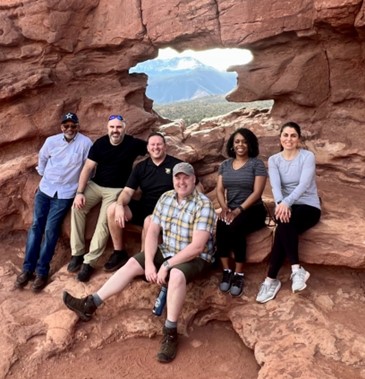
Simply Divine: The Virtual Seminar Fellows, meeting in person for the first time, participate in a teambuilding exercise at the Garden of the Gods, Colorado. Pictured left to right are Dr. Willie Lindsay, Robert Monto, Michael Upton, Wayne Beutler, Vanessa Pittman and Kelly Tisch.
Fellows with the DAU Senior Service College Fellowship (SSCF) Program spent the week of March 28 participating in strategic site visits in Colorado Springs and Boulder, Colorado. This trip enabled the fellows from the three seminars of the SSCF program—Huntsville, Alabama; Picatinny Arsenal, New Jersey and the virtual seminar—to gain key strategic insights from organizations responsible for implementing the nation’s security strategy. The fellows gained an understanding of military strategic interests in the space domain and ballistic missile defense; discussed the unique challenges in the defense of the nation and North America; learned about industrial base considerations for producing space systems; and compared a service perspective on the leadership development of future career military officers with that of civilians.
Fellows visited and learned about the missions of the following organizations: U.S. Space Command, U.S. Space Force Space Operations, U.S. Northern Command, North American Aerospace Defense Command, U.S. Army Space and Missile Defense Command, the Joint Functional Component Command for Integrated Missile Defense, Ball Aerospace (representative industry manufacturer of space systems), and the U.S. Air Force Academy.

Out Of This World: Fellows with the DAU Senior Service College Fellowship (SSCF) Class of 2022 pose at U.S. Space Command during their visit the week of March 28, 2022. (Photos courtesy of Defense Acquisition University)
FACES OF THE FORCE
“A Little personality Can Go A Long Way” article by Cheryl Marino, AL&T News

Meet Christina Lawson, from the enchanted land of gypsum crystal caves and the world-famous “slawburger” in Fayetteville, Tennessee. Christina is an acquisition analyst with Program Executive Office Missiles and Space, supporting the Field Artillery Launchers Product Office, in collaboration with the Strategic and Operational Rockets and Missiles Project Office. She holds a bachelor’s degree in Business Management from Athens State University and has almost 12 years of acquisition experience. Lawson shared her professional growth and development stories about opportunities, experiences, lessons learned, mentorship, work-life balance, and teamwork.
The decisions Christina Lawson makes have significant outcomes. Her role as an acquisition professional supporting the Field Artillery Launchers (FAL) Product Office portfolio involves collaboration with numerous teammates from across the Strategic and Operational Rockets and Missiles (STORM) Project Office and Army Contracting Command-Redstone Arsenal, Alabama, to develop the documentation for successful contract awards.
But when describing her job to others, Lawson tends to put it into more simplistic terms. “I write contracts for huge trucks that fire rockets and missiles and blow stuff up,” she tells them. A description to which, she said, the response is either “HOW COOL!” or “Oh, I see…” It all just depends on the audience.
“Honestly, there’s not a way to make writing a contract that is hundreds of pages long sound super fun and exciting,” Lawson said of her role as an analyst. So she resorts to what she calls the “elevator speech,”—the few lines that you give to someone trying to make small talk in an elevator. She’s found that this approach, which she said she is “still working on” mastering, can be effective in almost any situation—particularly in breaking the ice or when trying to use fewer words to explain something more complex or difficult to understand.
Lawson began her government career as a summer-hire in 2010, where she scanned large volumes of files, particularly contracts, into digital copies to cut down on the paper copies of massive documents. “I had no idea at the time that those very contracts would be the type of documents I would eventually work with,” she said.
Lawson continued that following year as a cooperative student—taking classes toward her undergraduate degree while working full time—in the Precision Fires Rocket and Missile Systems Project Office (now the STORM Project Office), directly supporting the program manager for the FAL Product Office. “I didn’t have a background in a specific skill set, although I was taking classes towards my Level I Defense Acquisition Workforce Improvement Act Program Management certification,” she said. “The opportunity to move to the acquisition division within the same project office presented itself, so I jumped on the chance to pursue something new.” This marked the beginning of her journey with the Army Acquisition Workforce as an acquisition analyst.
“At the ripe age of 22, I was drawn to the professionalism I saw in the individuals who represented the acquisition division. The expertise and confidence they displayed in public forums was something I wanted to possess myself,” she said, adding that she never would have made it this far without a mentorship.
“I had so many formal [and] informal mentors that I relied on day in and day out for the first few years of my acquisition career and still do from time to time. They were my personal cheerleaders—always encouraging me, challenging me or even ‘bringing me back to my senses’ when I almost made the decision to leave the government,” Lawson said. “At the time, I was young and never envisioned ‘acquisition analyst’ as what I wanted to be when I grew up. I guess you could say I was still trying to figure things out, and I was exploring my options.” It was during this exploration that her mentor convinced her to stay, she said.
Lawson said the guidance of her mentors was so valuable that she would pass along that same advice to junior acquisition personnel and especially “encourage them to never be afraid to ask questions and stick with it.” She said that coming into the world of acquisition can be both intimidating and overwhelming. “I think I was afraid, for a good six months, to answer emails without asking my mentor if my response was correct and responding with an ‘I’m not sure, let me get back to you’ more times than I can count, but if you stay loyal to this career field, it will become one of the most rewarding positions you will ever have,” she said.
“One of my mentors told me ‘always say yes when leadership asks the workforce for volunteers for special assignments [or] deployments.’ Even though I have developed personally and professionally in my career without taking on extended or traveling assignments, I do wish I would have said ‘yes’ a few more times when life was less hectic.”
And she said life can get pretty hectic. When she’s not serving as a team business advisor at work, Lawson is advising a different kind of team, in a very different capacity, at home. “People [outside of work] would probably say that I’m a girl mom who lives on a farm,” she said—seemingly the opposite of how she might be viewed at work. “The only thing this has in common with my work is that both my work and home life are crazy and busy. Between taking care of three hilarious, dramatic and into-everything girls under the age of six, along with helping my husband take care of our farm animals, it’s chaos all the time,” she said. But Lawson has figured out how to balance work and family life, and so far it’s working out pretty well.
In addition to juggling work and family, Lawson said a career development program called High5!, offered by an outside consulting company, that she completed in 2019, was extremely helpful and the “best class she has ever taken.” The program promoted the expanded benefits of effective team communication and collaboration, she said, and “was geared toward understanding both your unique personality and that of colleagues, and was amazingly accurate at generating your personality profile and displaying details of your possible strengths and weaknesses, effective communication techniques and suggestions for development—my results showed that I like to be involved, but also care about meaningful relationships with people.”
Personality assessment programs like this one include emotional vs. non-emotional approaches to different situations for determining best possible outcomes, and Lawson said at times, letting emotions get in the way of your job can be detrimental. She said the most important lesson she’s learned from the High5! course is being able to “take the feeling out of work.” That’s not to say she is completely without care or concern, it’s more about not becoming so sympathetic to a situation that you lose focus. “I am naturally a caring person, but sometimes I care so much that it hinders me from making a decision for fear of hurting feelings, burning bridges or making enemies,” she said. She finds that in many cases “removing the care” and “just doing your job” works out better in the end.
At the end of the day, the most rewarding part of Lawson’s job is working with cross-functional teams to support a major weapon system, and bringing the 15-year dormant Multiple Launch Rocket System (MLRS) production line back to life to support one of the Army’s top modernization priorities—Long Range Precision Fires. “Upon fielding, the MLRS M270A2 Launcher will offer new technology and increased crew protection,” she said, which achieves the ultimate goal of “keeping our nation’s Soldiers safer and equipping them with the most up-to-date capabilities.” And that makes it all worthwhile.
FACES OF THE FORCE
“Business as Usual” article by Cheryl Marino, AL&T News

Meet Staff Sgt. Abhiram Palivela, an active duty contract specialist with the 928th Contracting Battalion in Germany. Palivela has over seven years of military experience and holds a masters in Engineering Management from Syracuse University. He shared his perspectives on how his prior industry managerial experiences built a natural and solid foundation for his current work in the Army Acquisition Workforce. Palivela’s professional journey continues to expand and evolve as he is considering a future assignment with the Army Corps of Engineers and to participate in the Training With Industry (TWI) program. TWI is designed to provide extensive exposure to managerial techniques and industry practices in corporate America.
On-the-job training is an essential part of the package for any new hire, but if they happen to have a well-rounded assortment of prior industry experience—it’s a bonus.
An active duty Soldier since Feb. 2015, Staff Sgt. Abhiram Palivela joined the Army Acquisition Workforce just one year ago as a contract specialist with the 928th Contracting Battalion, stationed in Grafenwohr (Bavaria, Germany). He may be relatively new to Army acquisitions but, for him, preparing contracts really isn’t anything new.
Prior to joining the Army, Palivela was the owner of an Indian Fine Dining establishment called Thulasi Kitchen in Madison, Wisconsin for two years. So although he’s familiar with small-time business contracts, he said he was always intrigued by the “big Army contracting” world. “Even before I knew about the acquisition program way back in 2016 when the movie War Dogs [a movie depicting a fictitious company and the sale of firearms to the U.S. Government] came out, the first thing I did was to start looking into federal contracts and how to bid on them.” He said he was particularly interested in the contract specialist position because “the entire process from purchase requests [PR] being generated by the customer to PR being fulfilled by the contractor” appealed to him. “It is an extensively intriguing process, as it gives me a detailed insight into the whole contract action from start to finish, and helps me understand what I need to look for if I was a private company bidding on government contracts,” he said.
Palivela said in his role, his primary focus is writing contracts for supply buys, services and executing task orders against existing service contracts. “Everything we do has a greater impact on the army or warfighter as it is focused towards equipping the warfighter with what they need to win wars, such as basic life support that includes but not limited to transportation, food, latrines, showers, etc.,” he said.
Outside of work, he said people are always intrigued by the different aspects of his job, and the questions they have about his role typically vary—depending on the person and level of interest—but he said mainly they’re curious about “the different kinds of military contracts and the money involved.”
His job as a contract specialist might also be of particular interest to anyone outside Army acquisitions since it’s an entirely different line of work than the restaurant business, or any of the jobs he’s held before. Palivela began his career as a software engineer, technical lead for Dean Health Plan, Inc. (a healthcare insurance company) in Madison, Wisconsin, where he worked for four years providing analysis, design, development and implementation, testing and support for data warehousing applications. Then, as an active duty Soldier, just before joining the acquisitions workforce as contract specialist, Palivela served as practice manager at Stuttgart Dental Clinic Command, Germany for two years, where he was responsible for the dental readiness of over 4,000 Soldiers and family members assigned to the United States Army Garrison Stuttgart.
It can be said that Palivela has dabbled in a diverse assortment of industries and, as a result, he’s acquired an abundance of knowledge about how different types of businesses function and operate—valuable experience that he can apply to any role he takes on now and in the future.
Palivela’s career may have evolved over the years, but he said when it comes down to it, he’s pretty much known to those outside of work as a “software engineer” given his prior industry software experience. Even though, he said, there is really nothing in common between the software and acquisition field. “The software field is more of thinking outside the box, building an innovative code from scratch to develop a specific application, whereas the acquisition field is more streamlined with defined federal regulations which require us to strictly abide by the rules and regulations set in place to do any type of contract,” he said.
Palivela grew up in Hyderabad, India and came to the United States in Aug. 2009 to obtain a Master’s Degree from Syracuse University. He then joined the Army and served as a non-commissioned officer administration and operations supervisor and squad leader-in-charge of the administrative operations of Joint Base Lewis McChord Dining Facility in Washington state where, given his prior restaurant experience, he was responsible for supervising, manning, budgeting and smooth operations of the facility—including the management of 10 non-commissioned officers (NCO) and 50 junior enlisted personnel working within the facility.
In 2020, he was among a group of Soldiers selected into the 51C military occupational specialty (MOS) contracting NCO program, and graduated Army Acquisition Professionals Course in March 2021. The 51C NCOs not only provide support for anything a unit requires, but also serve as business advisers to the commander to ensure Soldiers get what’s needed to support the mission. As part of the reclassification process, Palivela said candidates “have the opportunity to take a deep dive into the world of federal acquisitions and gain valuable information and skills through the training, education and professional development aspects of the MOS.”
Palivela said even though he’s only been in his current position for a short amount of time, the experience he’s already gained has been his career development program. “So far, I am proud to say that I have made a great decision jumping on board the acquisition workforce.” Noting that there are many opportunities available for future career growth within Army acquisition.
“Being in this position for one year, right now it is hard for me to say what the important career points within the acquisition workforce are; however, hearing from my peers, I would definitely consider going to an assignment that involves the Army Corps of Engineers (construction) and the Training with Industry [TWI] program,” he said. The TWI work-experience program is designed to provide extensive exposure to managerial techniques and industrial procedures within corporate America.
Palivela said he hasn’t yet had an opportunity to offer any advice to junior acquisition personnel, but if and when he gets the chance, he would suggest that they “Keep an open mind as one can never know everything about acquisitions. Every day is a real learning experience and the longer we are in this field the deeper we dive into the federal regulations, the variety of experiences increase, teaching us something new about what we thought we already knew.”
He said what remains consistent no matter what the instance—both in and outside of work—is that being resilient to any given situation is something that he strongly believes in. “I have seen firsthand how things can change drastically,” he said. “Being resilient and calm always gets me working on finding a solution to the problem and able to see the light at the end of the tunnel.”
“The greatest satisfaction I receive from being a part of the acquisition workforce is to realize the fact that we are the force behind the force enabling the warfighter to be well equipped in order to train beyond standards and win wars.”
WHAT’S NEW?
- On May 24, an Army Acquisition Executive (AAE) memorandum was signed, appointing the U.S. Army Acquisition Support Center (USAASC) as the Director, Acquisition Career Management (DACM). This document gives the DACM full authority to serve as the Army’s representative for all Army Acquisition Workforce (AAW) matters within the Department of Defense and has the authority to manage the integrated execution and oversight, and daily management of the AAW education, training, and career development programs.
- On June 2, the DACM signed the Army Acquisition Tuition Assistance Program (ATAP) policy, establishing policy and procedures for participation in the Army Acquisition Tuition Assistance Program (ATAP) and outlines the application and selection process. This applies to AAW civilians and Military Occupational Specialty 51 Contracting (51C) Non-Commissioned Officers.
- On June 2, the DACM signed the Army Acquisition Advanced Civil Schooling (ACS) Program Policy and Procedures, establishing responsibilities and outlining policy and procedures for Active Component Functional Area 51 (FA51) officer participation in the Department of the Army’s Advanced Civil Schooling (ACS) Program.
The entire collection of AAW policies can be accessed in our Policy Library at https://asc.army.mil/web/alt-workforce-policy-procedure.
CAREER MANAGEMENT
UPDATING YOUR ARMY.MIL EMAIL ADDRESS WITH CAMP/CAPPMIS
- If you have transitioned to and are receiving emails to your army.mil email address, please ensure your email address is current on your Acquisition Career Record Brief (ACRB) within CAPPMIS (Career Acquisition Personnel and Position Management Information System).
To access and edit your email address through the CAMP/CAPPMIS portal go to https://apps.asc.army.mil/camp.
Once you are logged in with your CAC, click on CAPPMIS on the navigation bar, click on the ACRB tab, and then the “Edit ACRB” tab. Click on “Section IV – Personal”, edit the email address and press “Save.”
Another way to change your email address in CAPPMIS is by submitting a request. Once you log in to the system, click on the “Change Email Address” link on the right-hand side, fill out the form, and press Submit Request.
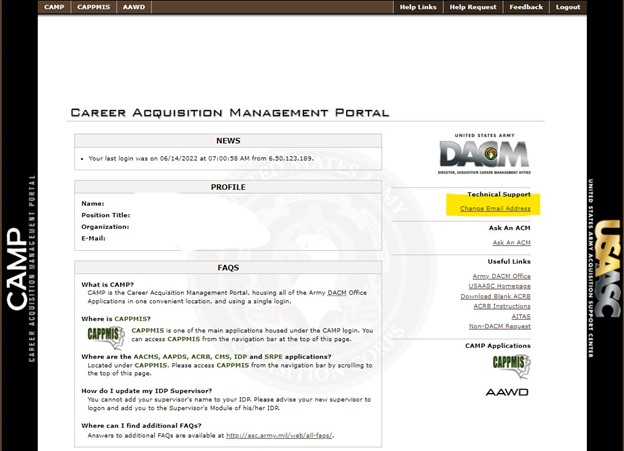
For more answers to acquisition career-related questions, visit our FAQ page at: https://asc.army.mil/web/all-faqs.







